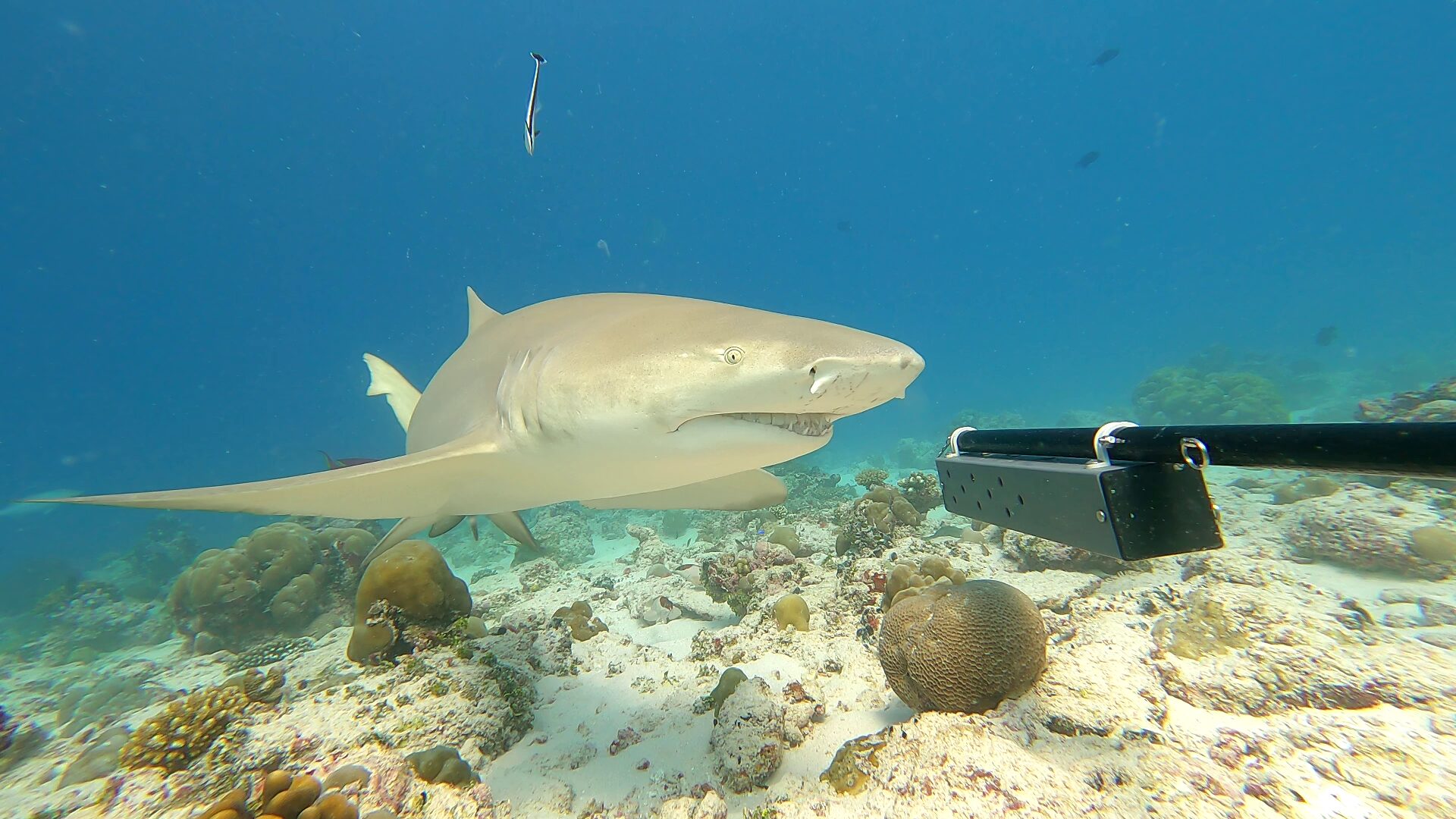Sicklefin lemon shark
Negaprion acutidens



Also known as the sharptooth lemon shark, the sicklefin lemon shark is almost identical to its American counterpart, the lemon shark Negaprion brevirostris. It can be distinguished by its falcate (sickle-shaped) pectoral fins, from which the shark gets its common name. A member of the requiem shark family, this species is a slow-moving predator, feeding on other fishes including smaller sharks and rays.
IDENTIFICATION
Large, slender and streamlined body typical of the requiem shark family. Yellowish colouration on dorsal side, white ventral. Broad, blunt snout. Teeth narrow and pointed; ‘dagger-like’. Dorsal, pectoral and anal fins falcate, a feature that distinguishes them from the morphologically similar N. brevirostris.

SPECIAL BEHAVIOUR
Sicklefin lemon sharks are often described as ‘sluggish’ and slow-moving, and can be found resting on the seabed. They have high site fidelity, tending not to stray far outside their home reef, atoll or lagoon – many individuals have been recognised at the same site year round.
REPRODUCTION
Reproduction is placental viviparous and females may give birth to up to 12 pups per litter. Sicklefin lemon sharks are thought to reproduce biennially, and may use mangrove forests as nursery grounds.
HABITAT AND GEOGRAPHICAL RANGE
Prefer turbid, still water in sheltered bays, reef lagoons, atolls and sandy plateaus. Often found on or near coral reefs and, in certain areas, around or within mangrove forests. Occurs up to depths of 90 m on continental and insular shelves. Widespread distribution in the tropical Indian and Pacific Oceans; from South Africa (including Seychelles and Madagascar) to India, around the coast of south-east Asia to the Philippines, and south throughout Indonesia and the north coast of Australia.

DIET DESCRIPTION
Sicklefin lemon sharks feed on a variety of fishes, including benthic bony fishes, stingrays, and smaller sharks.
THREATS
The sicklefin lemon shark is caught throughout its range, and retained for its meat and fins. It is susceptible to pressure from industrial and small-scale longline, gillnet, trawl and handline fisheries operating in coastal waters. Off India and southeast Asia, the species has been depleted due to fishing for its meat, fins and liver oil. Its association with coral reef habitats and possibly mangrove forests make it vulnerable to climate change, habitat loss and habitat degradation.
RELATIONSHIP WITH HUMANS
A relatively shy species, sicklefin lemon sharks are often reluctant to approach divers even in the presence of bait and will often retreat. They have been known to become aggressive when provoked, but bites are extremely rare and they remain a popular species with divers.
CONSERVATION
There are few species-specific measures for this species. Rather, the sicklefin lemon shark benefits from fisheries management measures such as those in northern Australia, where shark fisheries are managed using Total Allowable Catches, quotas and/or effort controls. Similarly, sicklefin lemon sharks may be protected under more generalised protective measures, such as Marine Protected Areas (MPAs) and shark sanctuaries, which ban shark fishing within the Exclusive Economic Zone (EEZ). Both occur in significant parts of the sicklefin’s range, especially in the Pacific. However, more data is needed to inform species-specific measures for the sicklefin lemon shark.
FUN FACTS
Sicklefin lemon sharks truly are homebodies! A 2013 study that examined their movements in a remote atoll in the Indian Ocean found that 79% of tagged individuals moved only short distances, remaining in the same atoll for the duration of the study.
Young sicklefin lemon sharks can be found in water so shallow that their dorsal fins stick out.
Lemon sharks like the sicklefin are named after their yellowish colouring.
References
IUCN Red List of Threatened Species. 2021. Sharptooth lemon shark.
David A. Ebert et al. 2021. Sharks of the World: A Complete Guide.
Florida Museum. Discover fishes: Negaprion acutidens
Filmater et al. (2013) Spatial behaviour and site fidelity of the sicklefin lemon shark Negaprion acutidens in a remote Indian Ocean atoll. Marine Biology, 13, pp. 2425-2436







